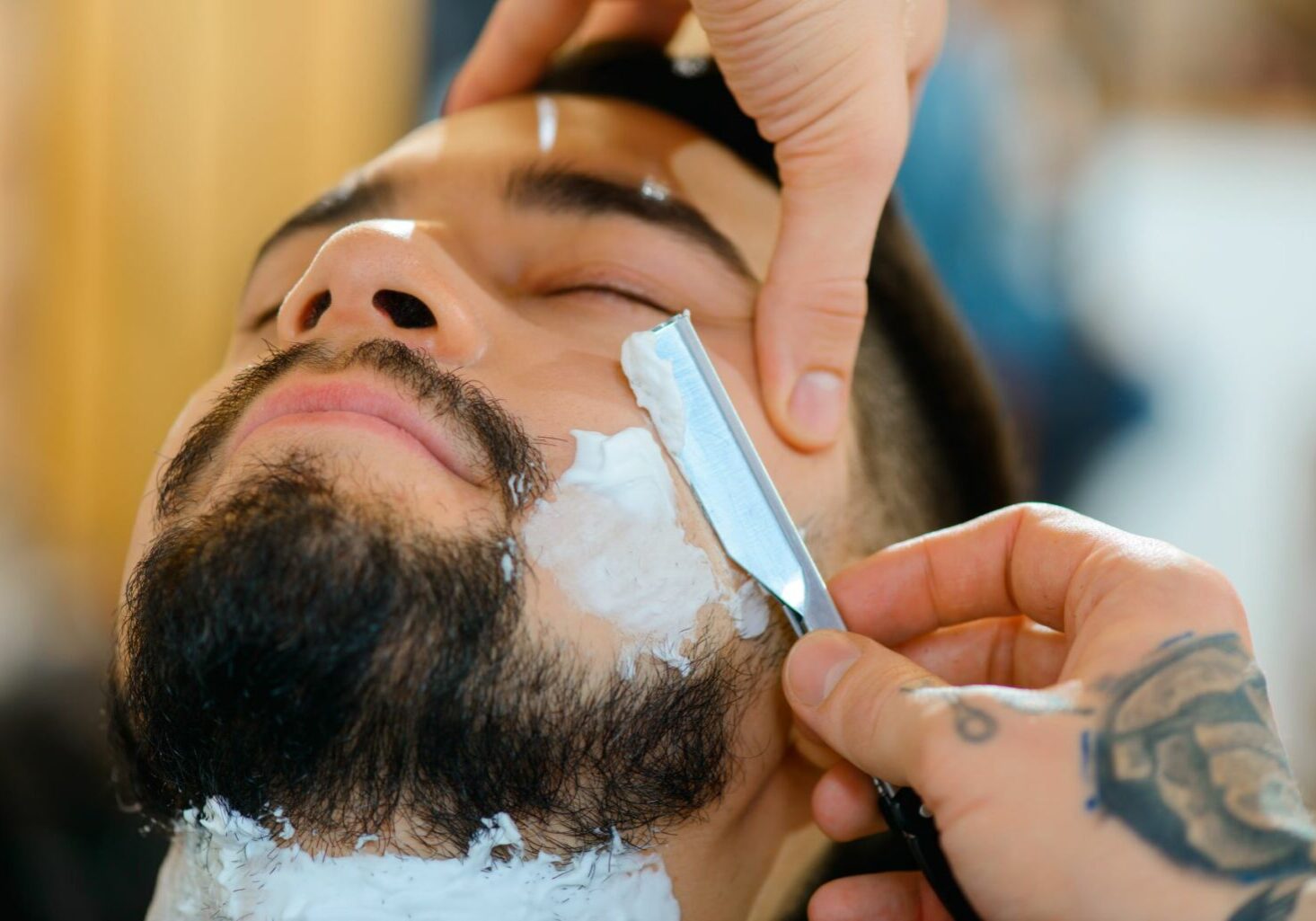Barber Straight Razor Shaves: How Barbers Smooth Things Over With Close Razor Shaves
Last Updated: July 26, 2024

An art form and a daily chore, shaving can be a real pain—literally. To maintain a clean, stubble-free mug, you’ll probably need to shave every day or two. But more frequent shaving can leave the skin raw and irritated.
For clients wanting consistent shaves, a barber straight razor shave could be the best solution since sliced “beard!” People adore the new and smooth confidence it gives them, especially if it prolongs their time in between shaves.
At the same time, these services aren’t without risk. We explore common questions and risk factors below.
How does a close shave differ from a standard shave?
What is a close shave? How does a close shave differ from a standard shave?
According to Milady’s Professional Barbering Course Management Guide, standard shaves are performed in the direction of the hairs’ growth. By comparison, a close razor shave includes a second-time-over phase where the barber shaves against the grain.
You’ll probably hone the straight razor for a cleaner, closer shave. 18|8 Fine Men’s Salons argues that, with an experienced hand and specialized training, straight razors promote better precision, expose less skin to the blade, reduce skin discoloration, and create longer-lasting results than electric alternatives.
Is it bad to shave against the grain?
Do barbers shave against the grain with close razor shaves? Yes, sometimes. Does shaving against the grain cause ingrown hairs? In many cases, also yes.
Some clients will handle a shave against the grain just fine. But this technique still increases clients’ risks of infection, ingrown hairs, and irritation. Therefore, sources like the Bearded Colonel advise that the proper shaving direction is with the grain.
The good news is you can achieve a clean barber’s straight razor shave and a clean claims record with the tips below.
How can barbers manage their risk with close razor shaves?
1. Consult with the client.
Before attempting a close shave, ask both new and repeat clients questions like:
- How often do they shave?
- What are their growth patterns?
- Do they have a history of acne keloidalis, pseudofolliculitis barbae, and other skin issues from past shaves or haircuts?
- Do they use any medicines or skincare products that could make their skin more sensitive?
- Do they have any moles or wounds, either active or healing?
Their answers may help determine if a close razor shave is appropriate for that client and how you might accommodate their skin’s current condition.
2. Take care of their skin.
Whether you’re shaving against the grain vs with, caring for your client’s skin makes a difference during a close shave.
For example, starting with warm water opens the client’s pores, while a nice pre-shave oil or lotion helps the blade glide smoothly, explains the Bearded Colonel in their guide.
3. Take care of your tools.
Want to know how to get a close shave without razor burn? Pay attention to your instruments.
The best razors for barbers who offer close razor shaves are sharp. Fresh blades are less likely to pull the hair than worn blades, the Bearded Colonel says. Additionally, cleaning your instruments often prevents infections and keeps tools in top shape.
4. Don’t rush.
Clients want to feel relaxed. Better yet, they don’t want unnecessary cuts.
The faster you shave, the less precise you’ll be. So don’t rush. .
5. Set a policy.
Before someone complains about any service, close shave or otherwise, have a policy dictating you and your employees’ response. Otherwise, their complaint could catch you off-guard and lead to a claim against your business.
Protect your business from close razor shave claims.
You know what doesn’t go against the grain? Barber insurance coverage for your business.
Insurance is key to shaving off unnecessary risk. Visit wellnessproinsurance.com to learn more.
